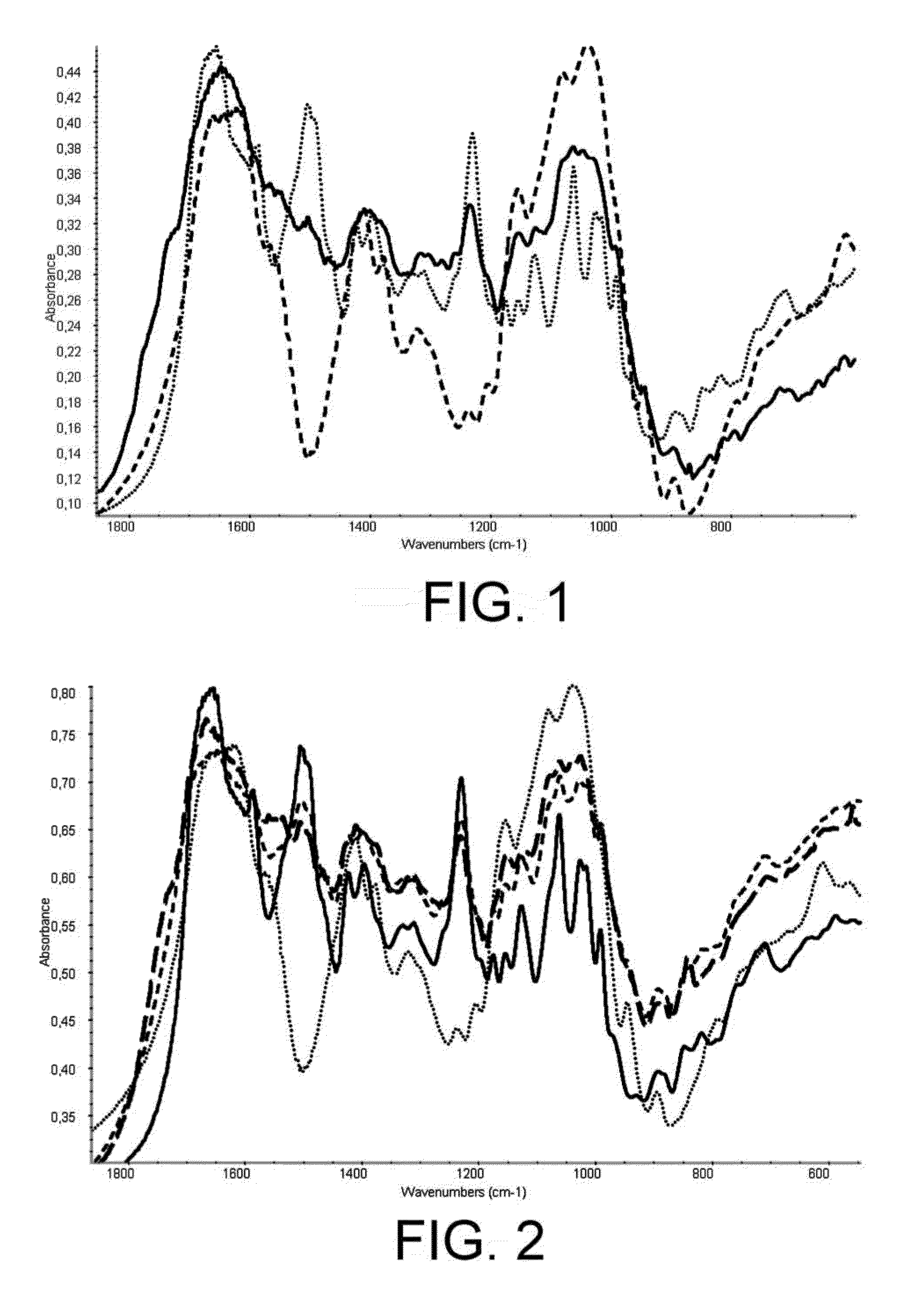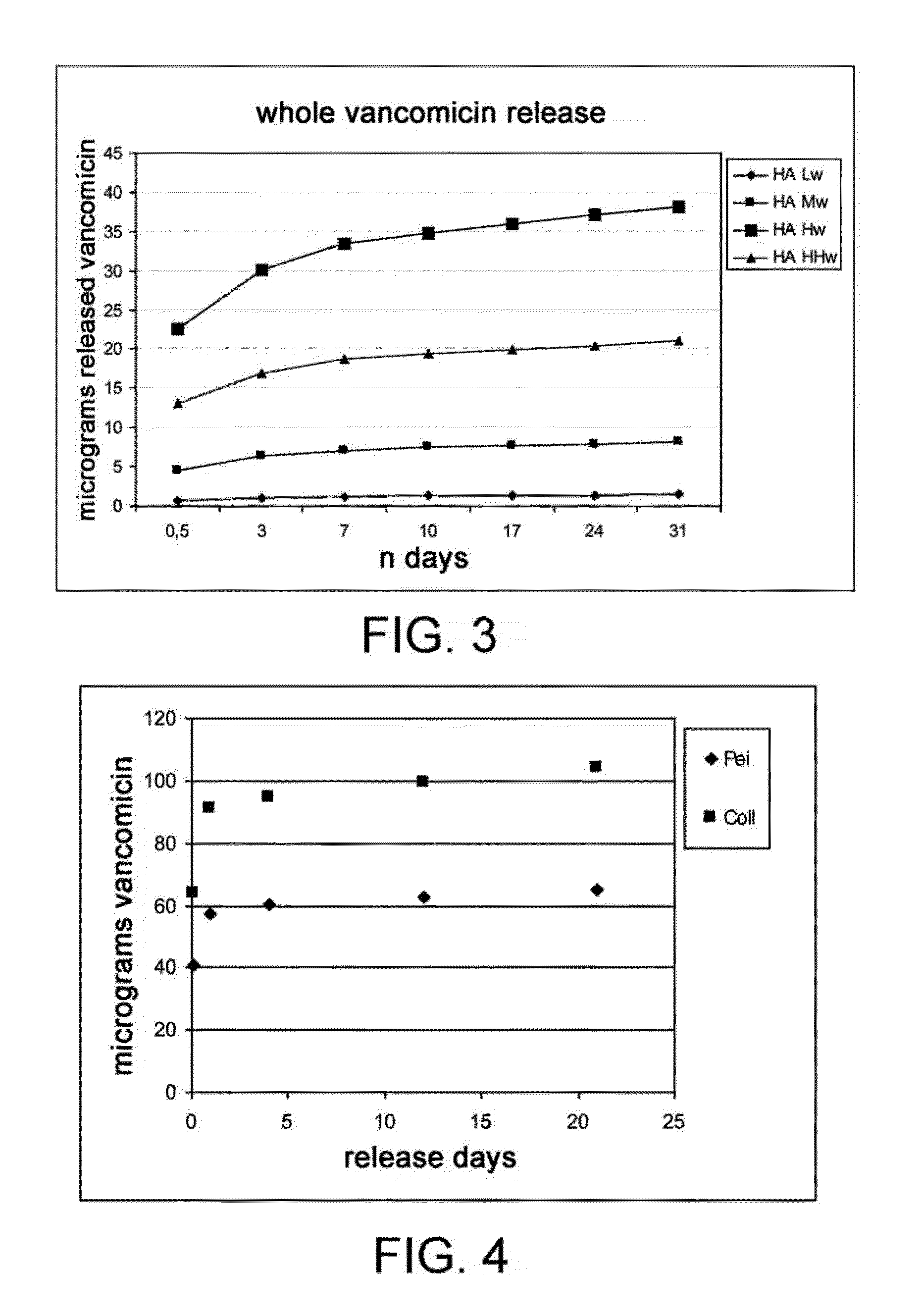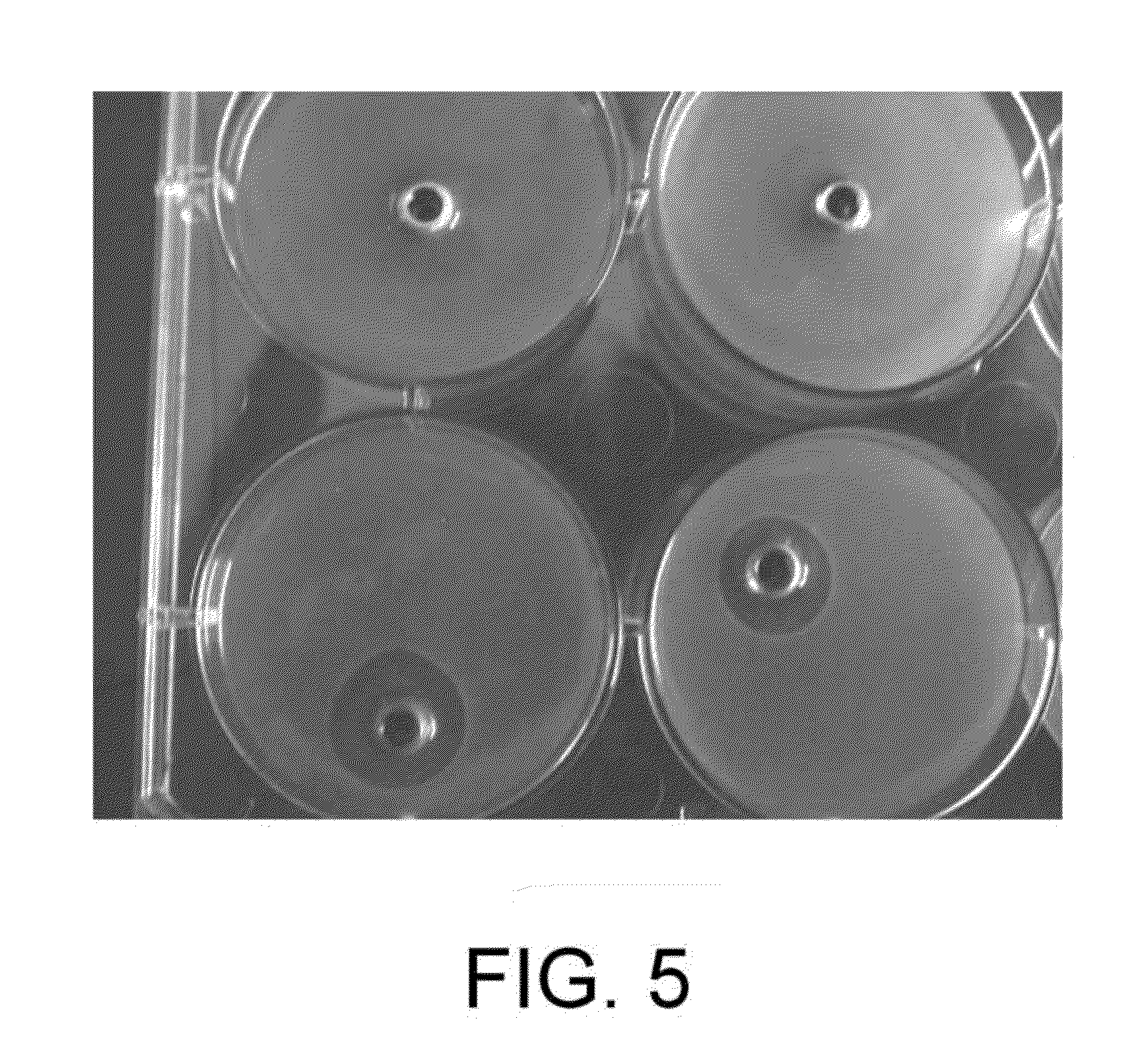Implantable devices having antibacterial properties and multifunctional surfaces
a multifunctional surface, antibacterial technology, applied in the field of implantable devices having antibacterial properties and multifunctional surfaces, can solve the problems of reducing the effect of the patient's ability to function normally, affecting the quality of the patient's body, so as to increase the tendency of the material and promote bone formation
- Summary
- Abstract
- Description
- Claims
- Application Information
AI Technical Summary
Benefits of technology
Problems solved by technology
Method used
Image
Examples
example 1
Hyaluronic Acid-Vancomycin Interaction
[0038]This example shows that there is a surprising interaction between vancomycin and hyaluronic acid.
[0039]A 0.1% (w / v) solution of hyaluronic acid HW (molecular weight 800 kDa, Lifecore) in milliQ water and a 0.5% vancomycin solution in milliQ water is prepared. The hyaluronic acid solution is gradually added to the latter solution and a gradual increase of the turbidity of the solution up to the formation of particles in suspension is observed (sign of strong interaction between HA and vancomycin). If two condensing agents, N-hydroxysuccinimide and subsequently ethyl-carbodiimide are added to the mixture, the solution turns instantly limpid. However, after 15 hours, the mixture becomes very turbid, with the presence of precipitates in suspension: probably the condensing agents are capable of bonding the amino groups of vancomycin to the carboxyl groups of the hyaluronic acid. Such precipitates were collected, washed with milliQ water and sub...
example 2
Hyaluronic Acid-Vancomycin Interaction
[0040]This example shows the fundamental role of condensing agents in the interaction between vancomycin and hyaluronic acid.
[0041]The previous experiment is repeated using hyaluronic acid and vancomycin solutions at very low concentrations (up to 10 times lower): in these cases, the addition of hyaluronic acid to a vancomycin solution does not cause an immediate turbidity of the mixture, which remains limpid. However, by adding the same amounts of condensing agents used in the previous experiment and leaving in incubation for about 15 hours, the solution turns turbid (even though at a lower degree with respect to the large precipitates formed in the previous experiment), proving that the HA-vancomycin interaction is somehow “stimulated” by the presence of condensing agents.
[0042]Solutions with high concentration of vancomycin in water (1%) and HA in water (0.5%) were prepared with the aim of observing possible differences between the HA-vancomy...
example 3
HA-Vancomycin Interaction on a Surface
[0046]This example shows that the process observed in solution also occurs directly on the surface of a material.
[0047]Polystyrene surfaces were prepared as follows:[0048]air plasma treatment for 20 seconds[0049]incubation with Polyethyleneimine solution (PEI) 0.5% in water for 2 hours[0050]washing with milliQ water (3 times)[0051]incubation of the polystyrene surfaces O.N. with hyaluronic acid solution 800 kDa 0.2% (Lifecore) in milliQ water, in presence of 5 mg / cc NHS and 7.5 mg / cc EDC.[0052]washing with milliQ water (2 times)[0053]incubation with 0.7% vancomycin solution in water overnight, in presence of 5 mg / cc NHS and 7.5 mg / cc EDC.[0054]Washing with milliQ water (3 times)
[0055]At the end of the treatment on the polystyrene surfaces thus prepared a very homogeneous opaque thin layer, derived from the occurred interaction between hyaluronic acid bonded on the surface in the first reaction step and the vancomycin added in the second reaction...
PUM
| Property | Measurement | Unit |
|---|---|---|
| Temperature | aaaaa | aaaaa |
| Fraction | aaaaa | aaaaa |
| Time | aaaaa | aaaaa |
Abstract
Description
Claims
Application Information
 Login to View More
Login to View More - R&D
- Intellectual Property
- Life Sciences
- Materials
- Tech Scout
- Unparalleled Data Quality
- Higher Quality Content
- 60% Fewer Hallucinations
Browse by: Latest US Patents, China's latest patents, Technical Efficacy Thesaurus, Application Domain, Technology Topic, Popular Technical Reports.
© 2025 PatSnap. All rights reserved.Legal|Privacy policy|Modern Slavery Act Transparency Statement|Sitemap|About US| Contact US: help@patsnap.com



